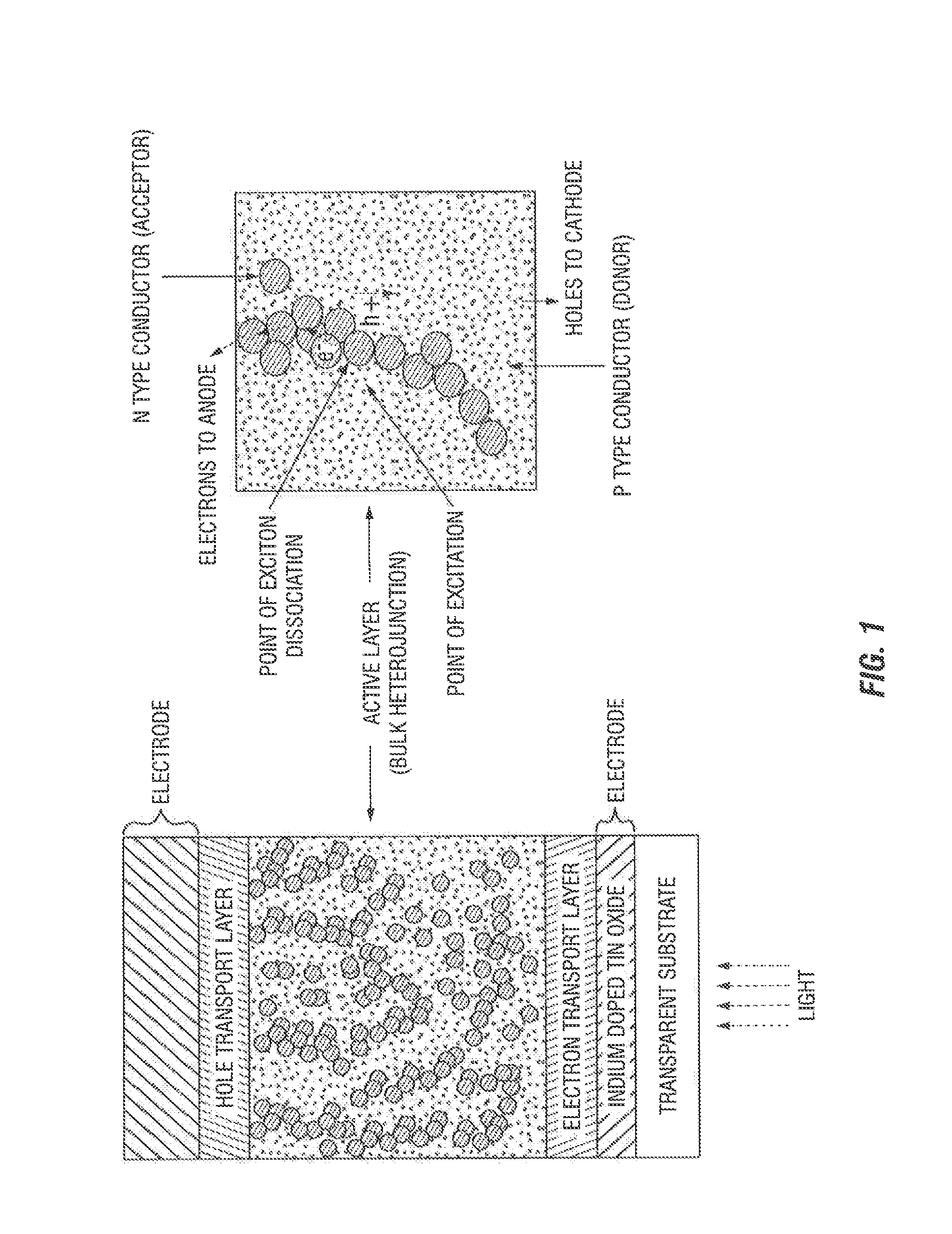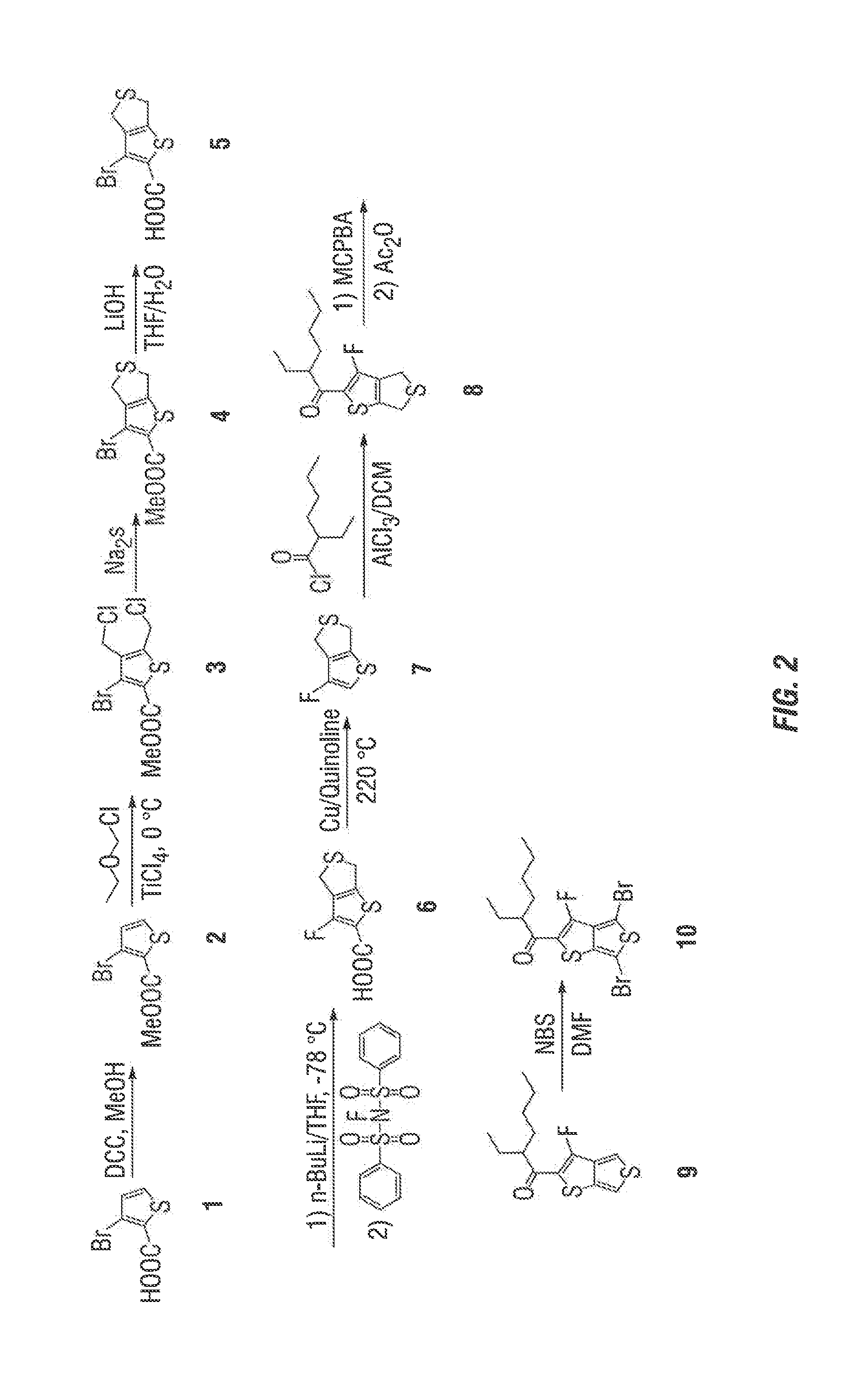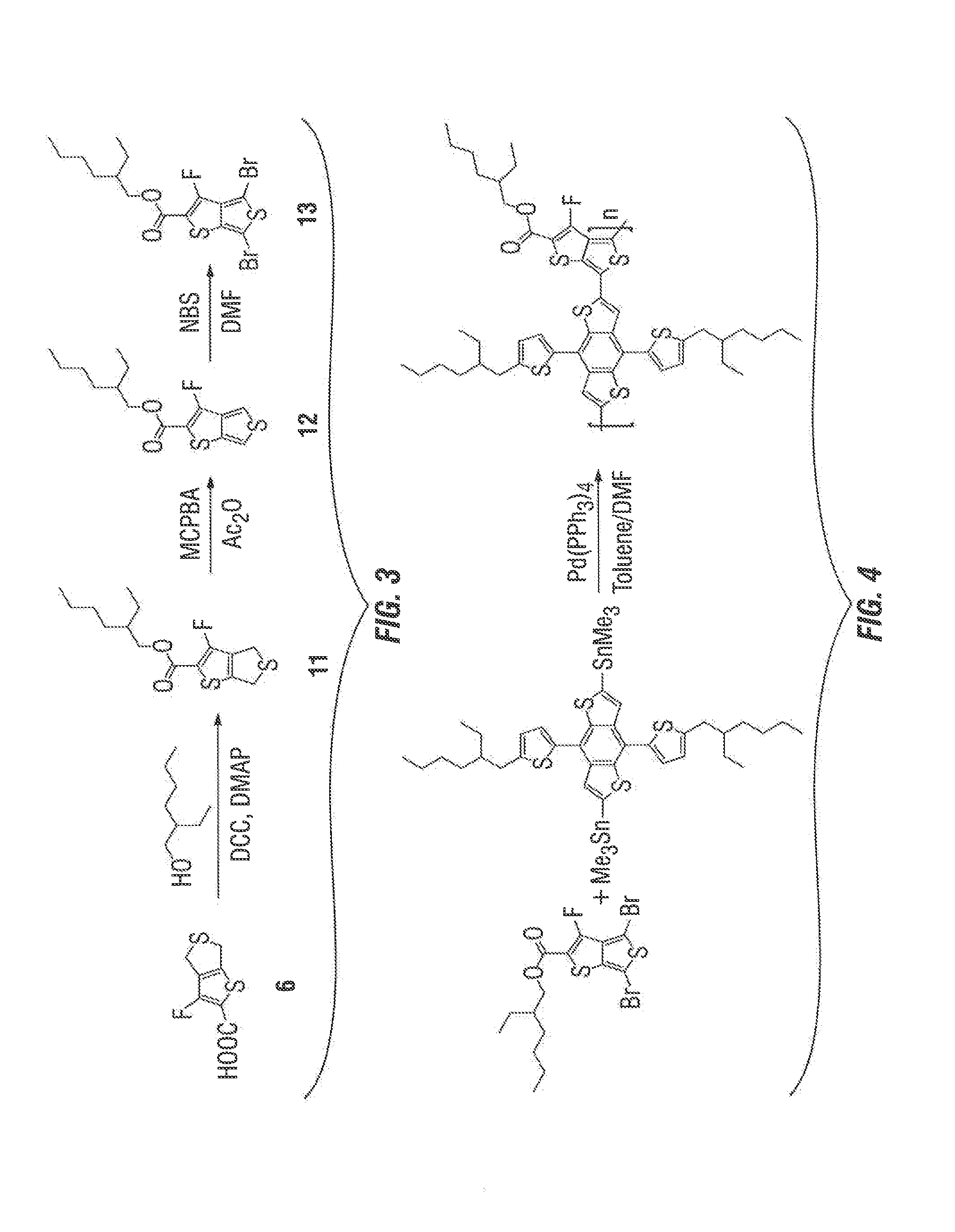Synthesis of photovoltaic conjugated polymers
- Summary
- Abstract
- Description
- Claims
- Application Information
AI Technical Summary
Benefits of technology
Problems solved by technology
Method used
Image
Examples
example 1
Synthesis of FTT-K
[0053]The synthesis route to prepare 1-(4,6-dibromo-3-fluorothieno[3,4-b]thiophen-2-yl)-2-ethylhexan-1-one (FTT-K) is outlined in FIG. 2. As a general matter, using 3-bromothiophene-2-carboxylic acid or a protected derivative thereof as the starting material is crucial to this synthetic route. This ensures the later bromo-to-fluoro conversion at a significant improved rate, from less than about 20% to about 60-80%.
Synthesis of methyl 3-bromothiophene-2-carboxylate (2)
[0054]The starting material 3-bromothiophene-2-carboxylic acid is commercially available, e.g., from Sigma Aldrich, and can be purchased or made from simpler starting materials. It may also be possible to purchase protected derivatives of this chemical.
[0055]The 3-bromothiophene-2-carboxylic acid was first protected at the carboxylic group. 3-bromothiphene-2-carboxylic acid was dissolved in methanol containing catalytic DCC. Mixture was reacted by refluxing overnight. After solvent was evaporated, the ...
example 2
Synthesis of FTT-E
[0064]The synthetic route of FTT-E is illustrated in FIG. 3, wherein compound 6 from the previous example was used as the starting material.
Synthesis of 2-ethylhexyl 3-fluoro-4,6-dihydrothieno[3,4-h]thiophene-2-carboxylate
[0065]500 mg of 3-fluoro-4,6-dihydrothieno[3,4-b]thiophene-2-carboxylic acid (2.45 mmol) was dissolved in 10 ml of dry methylene chloride. This solution was cooled to about 0° C. 530 mg of dicyclohexylcarbondiimide (DCC) (2.57 mmol), 30 mg of N,N-dimethylamino pyridine and 1 ml of 2-ethylhexan-1-ol was added. This reaction mixture was stirred at about 0° C. for about 1 hour and then warmed up to about room temperature for about 3 hours. The DCC salt was filtered off and the solution was poured into 50 ml water, and extracted with methylene chloride three times. The organic layer was dried over Na2SO4. After removal of the solvent by rotary evaporation, the residue was purified by column chromatography to yield 481 mg of product. The yield was abou...
example 3
Synthesis of CS-9
[0068](4,8-bis(5-(2-ethylhexyl)thiophen-2-yl)-benzo[1,2-b:4,5-b′]dithiophene-2,6-diyl)bis(trimethylstannane) (0.271 g) and 2-ethylhexyl-3-fluorothieno[2,3-c]thiophene-2-carboxylate (0.141 g) from previous example were dissolved in 10 ml toluene with 2 ml DMF. The mixture was purged with argon for about 10 minutes, and then Pd(PPh3)4 (16 mg) was added. After being purged with argon for about 20 min, the reaction mixture was refluxed for about 16 hours under argon atmosphere. Then, the mixture was cooled to about room temperature, and the polymer was precipitated by addition of 100 ml methanol. The precipitated polymer was then re-dissolved in chloroform and again precipitated by hexane. The product was dried under vacuum to obtain 0.226 g of a dark blue solid. The yield was about 75%.
PUM
| Property | Measurement | Unit |
|---|---|---|
| Fraction | aaaaa | aaaaa |
| Fraction | aaaaa | aaaaa |
| Fraction | aaaaa | aaaaa |
Abstract
Description
Claims
Application Information
 Login to View More
Login to View More - R&D
- Intellectual Property
- Life Sciences
- Materials
- Tech Scout
- Unparalleled Data Quality
- Higher Quality Content
- 60% Fewer Hallucinations
Browse by: Latest US Patents, China's latest patents, Technical Efficacy Thesaurus, Application Domain, Technology Topic, Popular Technical Reports.
© 2025 PatSnap. All rights reserved.Legal|Privacy policy|Modern Slavery Act Transparency Statement|Sitemap|About US| Contact US: help@patsnap.com



